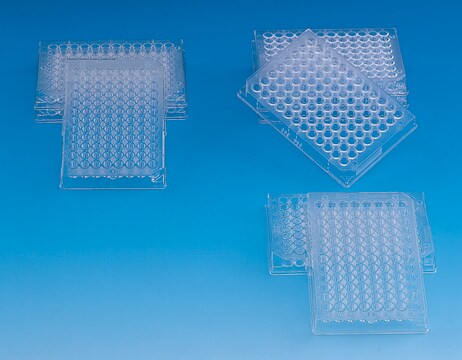M4187
Greiner Sensoplate™ glass bottom multiwell plates
96 well, sterile
Synonym(s):
96 multiwell plates, 96 well microplates, 96 well microtiter plates, 96 well plates
About This Item
Recommended Products
material
black polystyrene plate
colorless wells
flat clear borosilicate glass wells (175um thick)
polystyrene
description
glass bottom microplates
sterility
sterile
feature
lid
skirt (F-bottom)
packaging
case of 16 plates
manufacturer/tradename
Greiner 655892
L × W
127.76 mm × 85.48 mm
size
96 wells
well working volume
25- 340 μL
color
black plate
clear wells
binding type
non-treated surface
Looking for similar products? Visit Product Comparison Guide
Related Categories
General description
Features and Benefits
- Dimensions: Length: 127.76mm;
- Width: 85.48mm
- Borosilicate glass (175um thick)
- High Optical Clarity
- Low autofluorescence
- Bottom flatness better than 100um
- Class VI biocompatible adhesive
Legal Information
Certificates of Analysis (COA)
Search for Certificates of Analysis (COA) by entering the products Lot/Batch Number. Lot and Batch Numbers can be found on a product’s label following the words ‘Lot’ or ‘Batch’.
Already Own This Product?
Find documentation for the products that you have recently purchased in the Document Library.
Our team of scientists has experience in all areas of research including Life Science, Material Science, Chemical Synthesis, Chromatography, Analytical and many others.
Contact Technical Service







